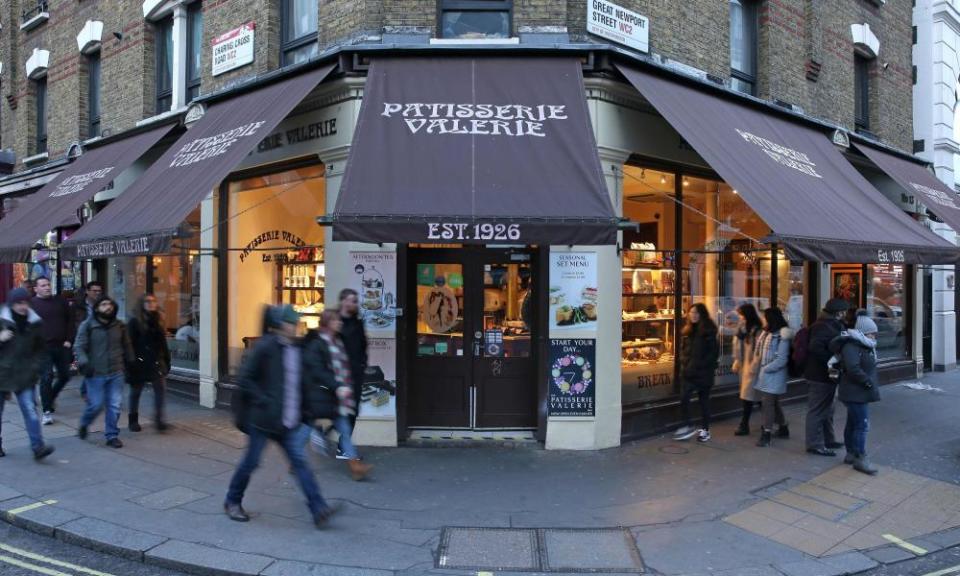Butterless puff pastry is bad enough. But other food hacks can be fatal

The revelation that struggling bakery chain Patisserie Valerie was so strapped for cash under its previous management that it took the butter out of its puff pastry may have shocked its new owners, but it didn’t come as much surprise to many in the industry. Traditional or not, if something isn’t sold as “all-butter”, it won’t be – in fact, in France, unless your croissant is advertised as pur beurre it will probably be made with margarine, and priced accordingly. They’re usually the crescent-shaped ones, and there’s no deception involved – margarine is just much cheaper.
Not all such substitutions are quite so upfront however. One correspondent who wishes to remain anonymous tells me of a cupcake business that has switched to oil with artificial butter flavouring to cope with rising wholesale prices, and another who works for a cafe chain admits that margarine is routinely used instead of butter “inside things that customers can’t see”.
Related: Post-horsemeat, can food forensics protect the sanctity of our plate?
Sometimes it goes as far as outright fraud: Grant Harrington of Oxfordshire’s Ampersand Dairy says he discovered that a (now former) customer was blending his butter in a half-and-half ratio with the “cheapest factory-made butter and serving it as cultured butter still”.
Of course, one butter looks much like any other, and the same goes for eggs, especially if they’ve had a bit of help – pastry chef Ravneet Gill tells me she once worked with a chef who made custard with packet eggs, correcting the colour with yellow food colouring, while caterer Milli Taylor bears witness to a pistachio cake whose vivid green crumb didn’t have much to do with its nut content.
Cheeses are also fair game – a recent investigation by the Channel 4 show Tricks of the Restaurant Trade discovered that of 11 cheese and tomato pizzas purchased in the same district of Liverpool, seven contained something called “analogue cheese” – a cheaper, non-dairy substitute most politely described as “plasticky” by their lucky taste testers.

The Food Standards Agency, whose food crime department looks into such fraudulent activity, found that of 91 fish samples submitted to them in 2017, seven were a different species to that claimed, while more than one-fifth of meat samples contained the DNA of animals not on the label. If something’s described on the menu as just “fish and chips”, then it’s probably not cod or haddock, and, as one award-winning national restaurant critic tells me off the record, “of course EVERYONE uses frozen chips”.
I hear tales of cheap summer truffles painted with black truffle oil in a Michelin-star kitchen, cucumber cut into the shape of prawns to bulk out a seafood cocktail, and a bottle of rosé made by “shaking a quarter of a bottle of red with three-quarters of a bottle of white” in the kitchen because the restaurant had run out of the real thing and the manager was “too embarrassed” to tell customers.
Indeed, both Fay Maschler, long-standing critic at London’s Evening Standard, and Joanna Blythman of Scotland’s the Herald, say darkly that they suspect “a lot” of corners get cut in restaurants – fellow reviewer Max Brearley cites the practice of new openings using produce “from highly reputable sources” for the first couple of weeks, and then swapping to cheaper alternatives without changing the menu: “When questioned, it’s always an ‘honest mistake’.”
But such deception might not be simply meanspirited: a tip off about macarons made with wheat flour rather than pricier ground almonds brings back memories of the sad case of Paul Wilson, who suffered from a severe peanut allergy and died in 2014 when the almonds in his chicken tikka masala were replaced with a less expensive, but ultimately fatal alternative.
Ingredients are something a restaurant needs to make a decent profit on to operate successfully – the Times’ Giles Coren recalls when Pizza Express took the fourth olive off the La Reine in 1997 “a manager told me … that replicated across the growing empire this alone would save millions a year”.
Small changes can make a big difference to the bottom line, especially in a challenging market, but they can also have serious consequences. Sometimes it’s a lot worse than just a bad millefeuille.
• Felicity Cloake is a writer specialising in food and drink and the author of six cookbooks

 Yahoo News
Yahoo News 
